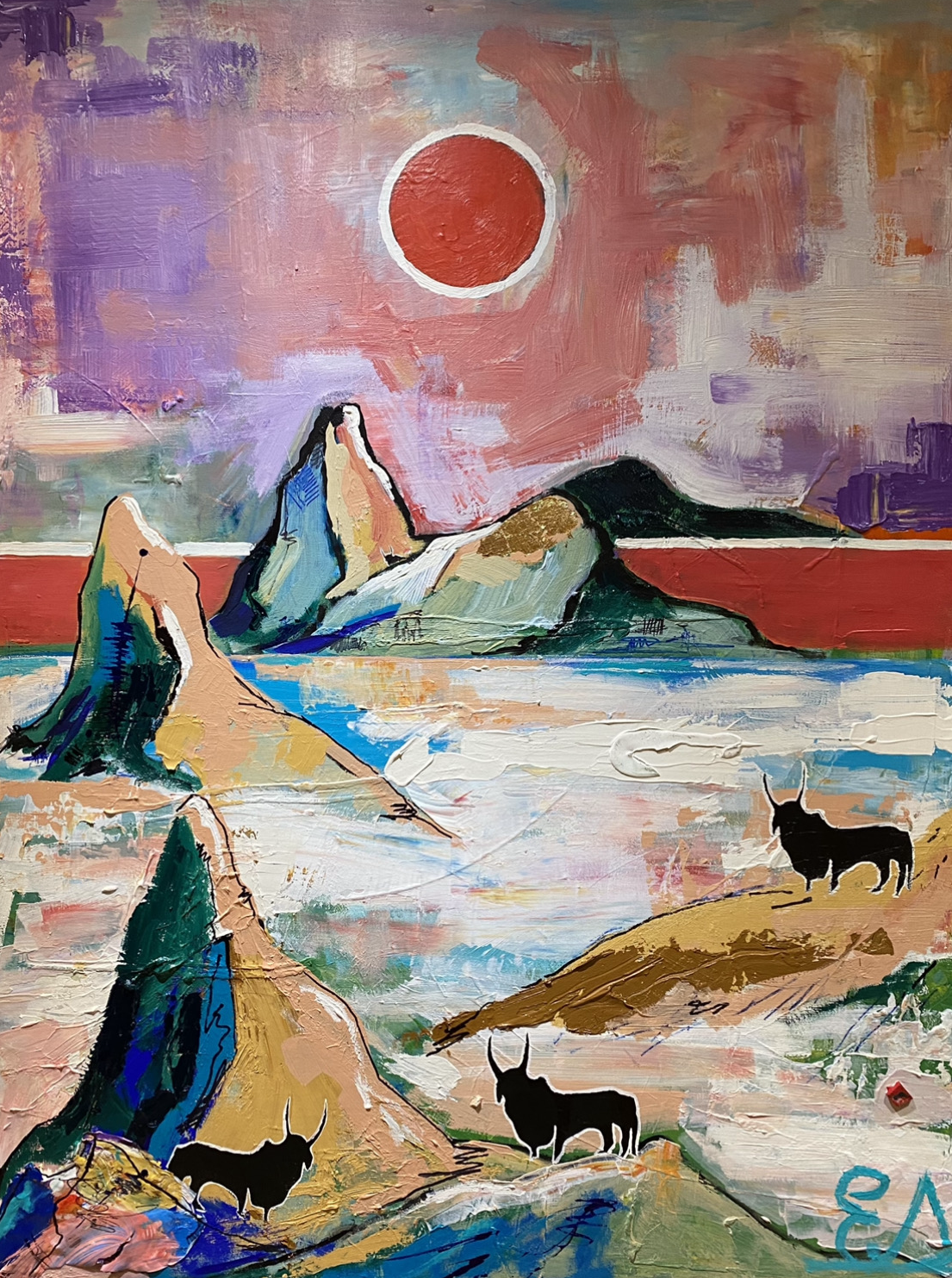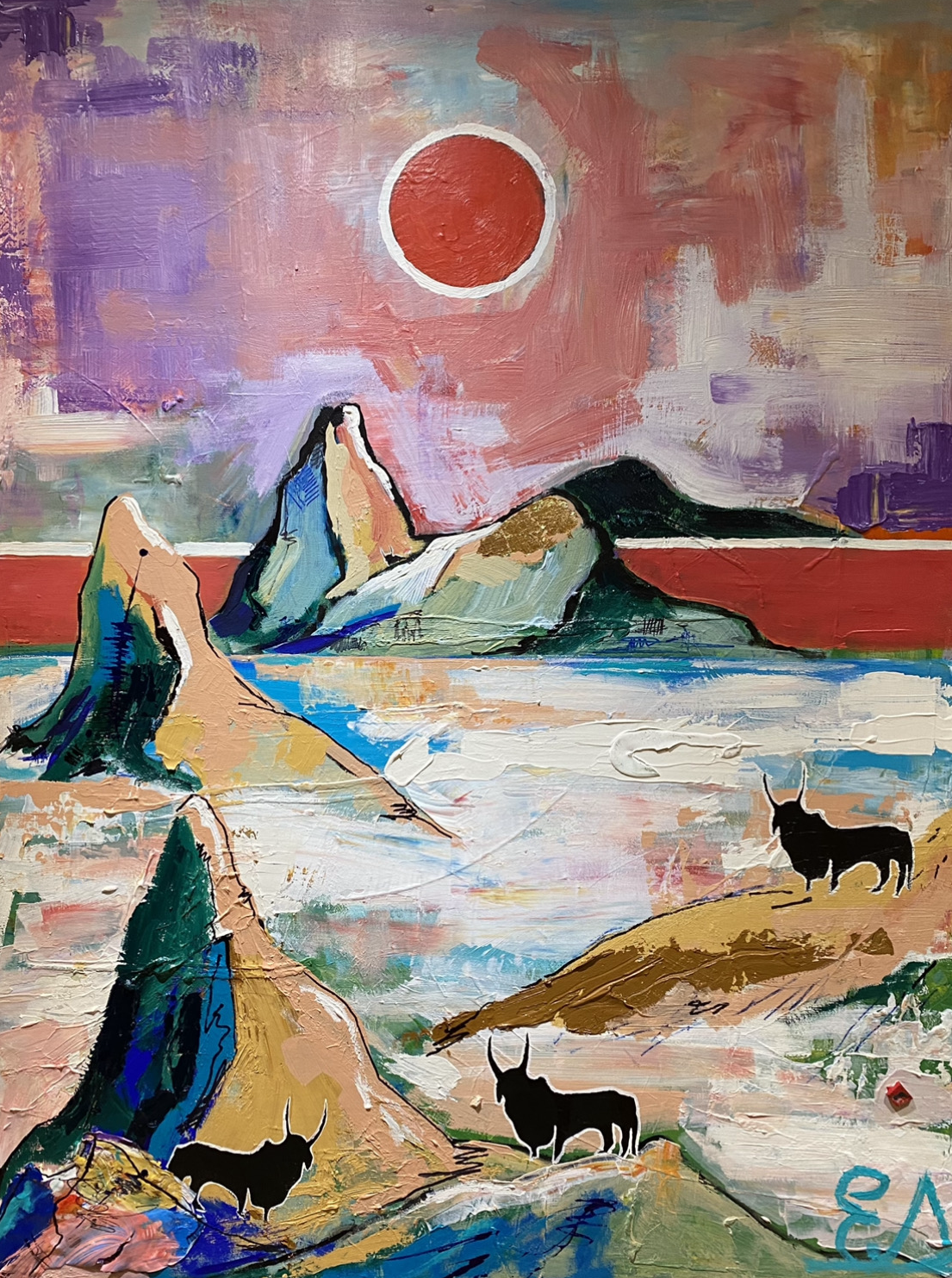Kanchenjunga
Kanchenjunga
Kanchenjunga depicts the world’s third highest peak. Situated in the eastern Himalayas, it is believed to be the most difficult to ascend. The Himalayan mountains are a recurring subject for Sharma who grew up hearing the stories of their richness from his grandfather who inhabited their valleys and spoke of their immense beauty despite the area being the Line of Control between India and Pakistan. Sharma also feels a spiritual connection with being above the clouds on glaciers.
In the painting, the mountain’s peak is situated above the clouds to capture the spiritual experience of ascension. But Sharma chose to render the sprawling peaks slightly different than he remembers them as a child; in the painting, they are no longer snow capped. Instead, the peaks are stripped of their glaciers and substituted with grazing pastures and jagged rocks symbolizing the changing flora and fauna that is underway with global warming . The painting’s warm palette suggests a humid, almost muggy climate, a severe departure from the piercing-cold expected at 28,169 feet. The idyllic composition belies the catastrophe that is fast approaching.
For many in the East, a line represents the transition between the physical world to the spiritual realm. Sharma’s crimson horizon draws the viewer's attention to that separation while also symbolizing the effect that methane and carbon emissions are having on our environment. By marking this band as a focal point of the painting, Sharma hopes to engage the viewer in questioning whether this line can ever be broken? Essentially, can we, as a species, move forward?
Kanchenjunga
Acrylic paint and methane monooxygenase on canvas
Size: 36 inch x 48 inch

